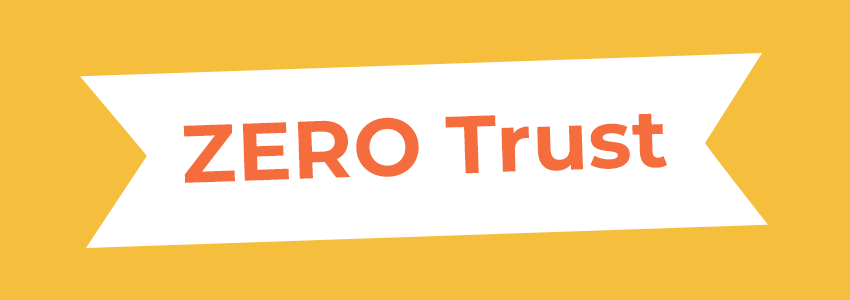WHAT IS A ZERO TRUST MODEL?




 (1 votes, average: 5.00 out of 5)
(1 votes, average: 5.00 out of 5)
Traditional network security is like the “castle-and-moat” concept. A moat surrounds the castle and protects everyone inside it from outside threats. This was a good security approach until internal data breaches became rampant. The need for a stronger security model has arisen. Zero trust security model is the solution. But what is a zero trust model? The old “castle-and-moat” concept has a distinct weakness. It only protects a network from outside threats. It wasn’t capable of defending against internal threats. What is a zero trust model and why do you need it? It’s an information security model designed as protection against external and internal threats. Every user or device trying to gain network access undergoes strict verification first. Upon successful authentication, the user or device gains network access, but with restrictions. This is a security control to limit what a user or device can do on the network. Imagine the consequences of a user gaining administrator level access. They can wreak havoc on the system and do other malicious things. This is the reason it is important to use a zero trust architecture. What is a zero trust model and does it matter for your business? It enforces strict verification for every user or device that needs network access. Protecting your clients’ sensitive data and your business’ confidential info is essential. A zero trust security framework offers strict authentication methods and end-to-end encryption. That’s how robust this security model is. You will learn more about what is a zero trust model in the next sections. You’ll also learn about endpoint security, MDR, and network security.
What Is A Zero Trust Model ENDPOINT SECURITY
Protecting sensitive and confidential data from various threats is vital. Endpoint devices like smartphones, laptops, and tablets contain valuable information 0 trust model. Stopping threats from infiltrating your network is next to impossible with zero trust-modell. You should restrict threats from writing to the hard disk and registry. Having advanced endpoint protection is one good solution.Here are the features that your endpoint security provider should offer:
Feature #1: Auto-Containment This feature protects endpoint devices against unknown threats without affecting user productivity. This also gives you zero-day attack protection. The threat is immediately contained upon detection. It can’t harm any file or process outside the virtual environment.
Feature #2: Fast Verdict The threats under containment undergo analysis, and results show up quicker than expected. This is possible through a combination of machine learning and human expertise.
Feature #3: Cloud-Delivered Your endpoint protection should be manageable within a central platform and show real-time visibility. The client-side application should be lightweight as well. A cloud-based zero trust solution provider is what you need.
What Is A Zero Trust Model (MDR)
At this point, you may well be wondering how you’re reaching to deal with all the technical stuff. A cloud-based Security Operations Center (SOC) will do these things for you. Think of this as an outsourced IT department with its own facility and hardware. outsourced IT department with its own facility and equipment. Here are the MDR features that you should get:
Feature #1: Detect and Find Security analysts will observe for malicious activities, policy violations, and intrusions 24/7. This is like deploying security guards to every corner of a building. Having said that, you can also enforce this as part of your network’s physical security.
Feature #2: Threat Hunting A proactive approach in searching for threats in client networks is advisable. There should be no room left for any threat to hide and do malicious activities.
Feature #3: Managed Response Analysts will add endpoint security and network protection using the right configurations. The best defense is always having many layers of security.
What Is A Zero Trust Model NETWORK SECURITY
You can prevent employees from exposing your network to various threats. You can also regulate their web browsing activities from anywhere and on any device. You can identify the gaps in your network security faster. Here are other features to look for that a zero trust network security provider should offer:
Feature #1: Secure DNS Filtering You can add a network, confirm security policies, and change DNS settings in a few minutes. These are all doable at the same time while preventing unproductive web browsing. Your zero trust network security provider should be able to do all these things.
Feature #2: Remote User Protection Web browsing rules are applicable to all employees, whether they are in the office or not. Their browsing activities are observable from anywhere.
Feature #3: Customize With Ease You can customize category and security rules according to your needs. This also applies to both protection and productivity.
Conclusion You learned what is a zero trust model. You also learned about endpoint security, MDR, and network security. For more information on what is a zero trust model
Related Resources